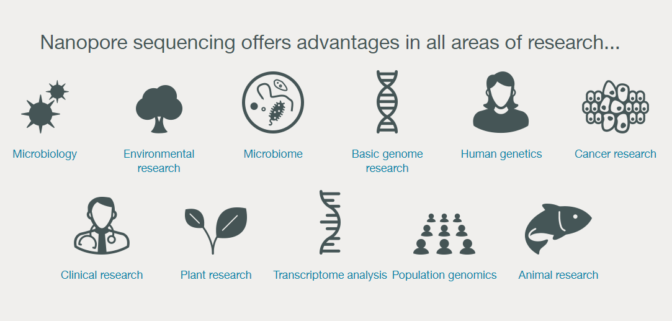In the vast stretches of iron-red soil fields in much of Africa, cassava plays an essential role in the food supply and livelihoods of over 800 million people. Think rice in Asia and wheat in Europe.
So when two whitefly-borne viruses attack the plant, the consequences to farmers and consumers can be devastating. Timely diagnosis of the cassava pathogen hadn’t been possible. Instead, farmers who suspected their plants were diseased had to destroy their crops.
However, DNA information can help farmers identify which virus the plant has, so they can take the appropriate action.
UK startup Oxford Nanopore Technologies is speeding the discovery of pathogens with its MinION device, a portable, low-cost, real-time DNA and RNA sequencer. The MinION connects to the just-introduced MinIT hand-held AI supercomputer, powered by NVIDIA AGX, and runs sequence analysis in real time, anywhere — even in the field.
“MinIT is the perfect, powerful companion to MinION, the only portable real-time DNA sequencer,” said Gordon Sanghera, CEO of Oxford Nanopore. “As data streams faster from our sequencing devices, GPU technology like NVIDIA’s becomes central to preserving the real-time properties of our DNA sequencing technology.”
MinIT is now being shipped to scientists working across a variety of scientific disciplines. Many are working on healthcare applications, such as the rapid identification of infectious disease, cancer or other diseases. Others are focused on plant or environmental science, or even using the technology in education.
AI for Basecalling
Nanopore sequencing measures tiny ionic currents that pass through nanoscale holes called nanopores. It detects signal changes when DNA passes through these holes. This captured signal produces raw data that requires signal processing to determine the order of DNA bases – known as the “sequence.” This is called basecalling.

This analysis problem is a perfect match for AI, specifically recurrent neural networks. Compared with previous methods, RNNs allow for more accuracy in time-series data, which Oxford Nanopore’s sequencers are known for.
Accessibility + Speed = Breakthroughs
Since its launch in 2015, the MinION has put DNA sequencing in hands of the most curious scientists, some of whom work in the most hard to reach places in the world. Examples are frequently posted to Oxford Nanopore’s twitter feed @nanopore.
Another, posted just this week describes how MinIT and MinION have been used onboard a marine research vessel in Alaska to perform onboard scientific analyses of seawater.
The work focuses on DNA analysis of microbial life in the sea helps the researchers understand the marine ecosystem, biodiversity in the ocean and how climate change can affect microorganisms there.
Focused on performance — both speed and accuracy — Oxford Nanopore uses NVIDIA GPUs for data analysis along with all their DNA sequencing devices.
With MinIT on NVIDIA AGX, they’re approaching a 10x performance improvement over previous versions to help unlock real-time human and plant genomics. Its benchtop PromethION product is powered by NVIDIA Volta GPUs and can crank out a human genome for under $800.
Learn more about the MinION.

